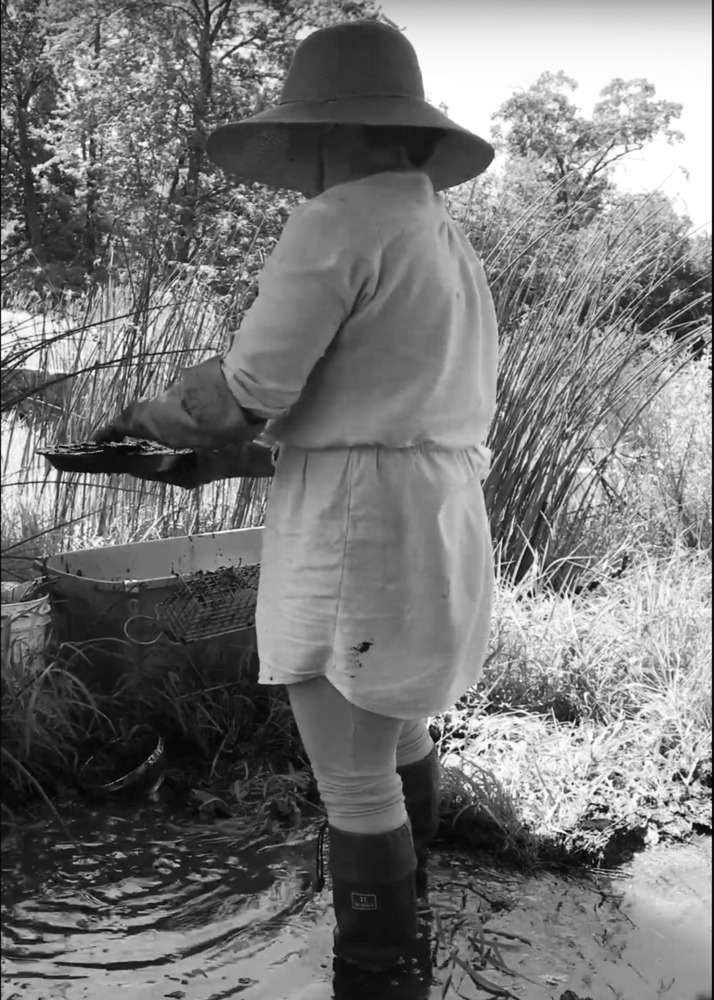
MERE POND MUD PIE COMPANY
first performed on June 22, 2019
Elm Park Mere Ponds, Worcester, MA
performed 22 times in 2019
KATE EGNACZAK
Grafton, MA / Worcester, MA
882641041k882641041e882641041g882641041n882641041a882641041c882641041z882641041a882641041k882641041@882641041m882641041e882641041.882641041c882641041o882641041m
kegnaczak.com
MERE POND MUD PIE COMPANY
KATE EGNACZAK
“Mere Pond Mud Pie Company” created a floating mud pie assembly kitchen performed as part of a temporary summer artist residency during “Interludes, Art in the Park,” in Worcester, Massachusetts. The proposed residency, “Pollinator Picnic,” addressed the maintenance concerns for pollinator plants in raised bed gardens constructed by my students at Jacob Hiatt Magnet School. The intention of the residency was to leverage the public visibility and the gardens to increase and attract pollinator populations while engaging audiences to consider conservation efforts in public spaces.
Each week I activated Elm Park’s Mere Ponds with a choreographed stand-up paddling route along shores of three interconnected ponds. I watered the gardens by collecting water while retrieving litter and refuse from the ponds. Collected litter was hung out on clotheslines on my paddle-up island-based studio. I continued the routine to set up the Mud Pie Co. in muddy areas where sediment restricted the natural flow of the water. After screening and sorting organic matter from the mud, I poured the deposits into pie pans, clearing water trails for resident turtle and fish populations. The pies were transported back to the island on the paddleboard deck and placed on a woven stick drying rack. Left exposed for mason bee populations while they dried thoroughly, “Mere Pond Mud Pie Co.” situated the mud closer to the gardens for the bees to use in creating nests.
The public display of extracting the mud and picking up litter instigated viewers to question why I was cleaning up the Park. Although the weekly paddling routine alluded to leisure and recreational activities initially envisioned in the Park’s historic design, it was a platform to address conservation issues around waste, water quality, and public space.